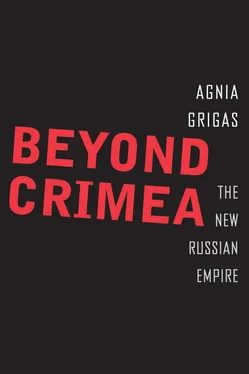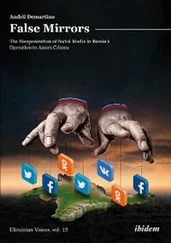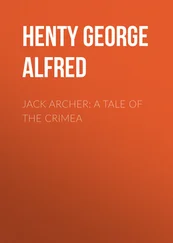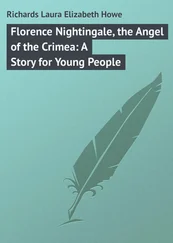The Russian notion of protection is very broad, as Moscow has reserved for itself almost all its forms in response to various levels of threat. Moscow’s earliest conceptualizations of how to defend its compatriots abroad via military intervention were established in a draft military doctrine published in May 1992. It defined one of the basic tasks of the military as defense of the “rights and interests of citizens of Russia and people linked with it ethnically and culturally abroad.” 118While the final text of the military doctrine, published in 1993, narrowed the group to be defended to just citizens, it still defined “the suppression of the rights, freedoms and lawful interests of Russian citizens in foreign states as a source of military danger.” 119In recent times, Russia’s policies in Georgia and particularly in Ukraine have established two criteria according to which the Kremlin can use military force to protect Russian compatriots. First, when there is a presumed threat to their security (their lives or physical well-being). 120Second, when Russian compatriots (but not necessarily their legal representatives) request Russia’s assistance. 121However, the Russian government has declared on more than one occasion that it seeks to protect Russian compatriots and citizens abroad not only in the face of danger but during any infringements of their “dignity” and “honor.” For example, during the Russo-Georgian war in August 2008, Medvedev reiterated that “protecting the lives and dignity of our citizens, wherever they may be, is an unquestionable priority for our country.” 122Russia’s use of military force in South Ossetia was also justified as defense of “the dignity and honor of the Russian citizens.” 123Finally, as the case of Ukraine demonstrated in 2014, this protection need not be officially requested or even approved by the compatriots. The Kremlin has seemingly called to protect compatriots in eastern Ukraine from the new government in Kiev by its own decision. For instance, a month after the annexation of Crimea, in April 2014, the Gallup Organization conducted polls in Ukraine and found that only 8 percent of the population in eastern Ukraine responded “definitely yes” to wanting protection by the Russian army. In contrast, 52 percent of eastern Ukrainians responded “definitely no.” Likewise, 11 percent responded “rather yes” while 17 percent responded “rather no.” 124While the accuracy of the sample in this or any poll can always be questioned, there was no evidence to suggest that (beyond the small number of separatist insurgents supported by Russian militias) eastern Ukrainians sought Moscow’s protection.
Ultimately, President Putin has regarded any threat to the supranational concept of the Russian World as a pretext for protection. In the case of Ukraine, on June 24, 2014, Putin argued: “We shall always protect the ethnic Russians in Ukraine, as well as that part of Ukraine’s population that feels inseparably linked with Russia ethnically, culturally and linguistically, that feels to be a part of the broader Russkiy Mir. ” 125As Russian policy experts such as Marlene Laruelle conclude, the concept of the Russian World “serves as a justification for what Russia considers to be its right to oversee the evolution of its neighbors, and sometimes for an interventionist policy.” 126In addition, Russian state interests and not only Russian minorities can also warrant protection. For instance, as then president Medvedev reiterated at the end of August 2008 following the Russo-Georgian war: “Russians have special interests in the former Soviet Union and in friendly relations with these states. Intrusions by others into these regions that undermine pro-Russian regimes will be regarded as a threat to Russia’s special interests.” 127This statements has been echoed vis-à-vis Armenia, Belarus, and other Russian ally states. However, the protection of Russian minorities or even Russian state interest is not necessarily the end goal of the reimperialization trajectory.
The final stage of the trajectory is either formal or de facto annexation of the territories where compatriots reside. However, Russia’s reimperialization of post-Soviet territories and the policies that can result in annexation should be understood as an ongoing, long-term process rather than a final step. In this process human rights violations, protection, and the right to self-determination are evoked. Polls may be conducted and referendums held. Even the rapid referendum in and annexation of Ukraine’s Crimea belies the fact that Moscow’s policies of passportization had been under way in the peninsula for many years before, as will be demonstrated in Chapter 4. The variation in timing and conditions of Russia’s efforts of territorial expansion across the post-Soviet space does not diminish the consistency of Russia’s aim of extending its power over or taking over former Soviet territories where Russian compatriots reside. The propaganda for protecting Russian compatriots facilitates Russia’s search for a modern-day version of the Anschluss, in which Nazi Germany invaded and incorporated Austria in accordance with its propaganda campaign for uniting ethnic Germans and the territories where they resided in a single state.
To date, Crimea is the sole case of outright annexation. It is a unique case, Moscow’s defenders may argue, because fifty years ago, this originally Tatar territory was part of the Russian state. By contrast, Moscow has still not recognized Transnistria’s independence nor tried to annex the territory, despite the fact that it declared its independence from Moldova in 1990. Nonetheless, albeit internationally unrecognized (except by South Ossetia and Abkhazia), Transnistria has in effect become Moscow’s puppet territory. Georgia’s South Ossetia and Abkhazia have declared independence and both are now seeking closer integration with the Russian Federation. Ukraine’s militant-run Luhansk and Donetsk, self-proclaimed “people’s republics” are likely to follow in the footsteps of South Ossetia, Abkhazia, and Transnistria. The separatist forces in the two conflict zones in Ukraine are largely armed, manned, and supported by Russia (in spite of Moscow’s denials), and the separatists’ “independence” may in the future even gain Moscow’s official recognition, if not lead to annexation.
Despite the Kremlin’s assertions of the right to protect compatriots and citizens anywhere in the world, and especially in the near abroad, it has shown some reluctance and caution about officially sending in armed forces for this purpose or for annexation. The Russian military engaged the Georgian forces in South Ossetia and Abkhazia but insisted it did so only after Tbilisi sent in troops to recapture the rebel territories. In Ukraine, Moscow preferred to rely on hybrid warfare. It is very telling that even by mid-2015, despite all evidence to the contrary, the Kremlin has refused to admit both domestically and internationally that Russian armed forces were fighting in eastern Ukraine. Instead, high-ranking Russian officials such as Foreign Minister Sergey Lavrov and Russia’s envoy to the UN Vitaly Churkin have argued that the Russian soldiers who were fighting in Ukraine’s Donbas region were merely volunteers. 128Likewise, Russian soldiers on the ground explain that they are simply spending their vacation days in eastern Ukraine and personally support the activities of the separatists. 129The purpose of such a narrative has been to consistently deny Russian military interference and characterize the war as a conflict between Kiev and a group of local, home-grown rebels rather than Russian forces. Furthermore, in May 2015, Putin issued a decree to the effect that deaths of Russian soldiers or injuries to them occurring in the course of “special operations” can be classified as military secrets, even in peacetime. 130This effectively blocked any public inquiries regarding the involvement of Russian soldiers in Ukraine and the resulting casualties.
Читать дальше












